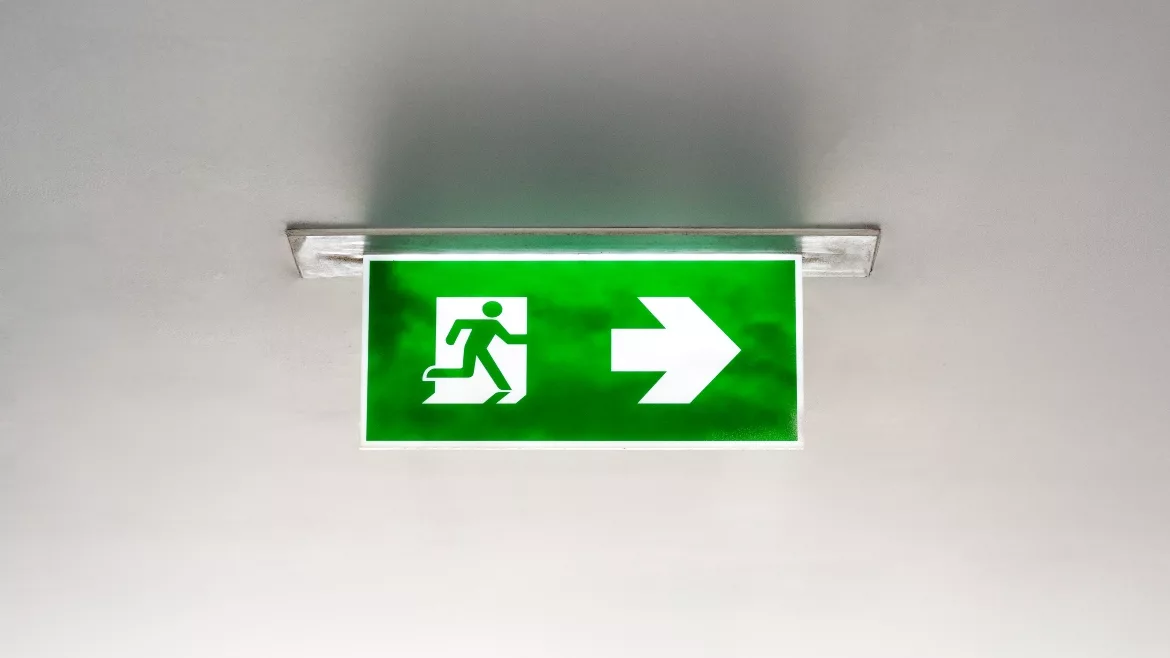Using voice to improve your emergency evacuation plan

Last July, a woman allegedly bolted through a security checkpoint at Newark Airport’s Terminal C before being detained by law enforcement.
The security breach caused “significant alarm” among airport travelers, said a news report. Some passengers “self-evacuated” onto the airport tarmac amid the commotion. “While there was no bomb threat nor shooting that occurred, the disturbance caused significant public alarm to ticketed passengers who consequently ran from the disturbance and exited the terminal through various means,” the Port Authority Police Department said in a statement. One traveler tweeted “People screaming, running, falling down steps…some people were mid check-in and are barefoot outside. 100% total chaos.”
That type of situation – where large groups of individuals quickly leave a building or area due to a security or safety threat – is not unusual. Regularly, situations such as extreme weather, a bomb threat, a chemical spill, or other emergency situation require security teams to execute their evacuation plans.
Audio’s Value in Evacuations
As security professionals, you know that an emergency evacuation requires a clear chain of command, specific procedures to follow, an assembly place, a way to account for all employees and visitors after the event, and more.
Employees may know your facility’s standard evacuation procedure, but do your vendors and visitors know what to do?
And despite training, employees, vendors, and visitors could still:
- Be confused about signs or written instructions as to where to go, which door to use, or more
- Be working in a secluded part of the building without windows or other colleagues to alert them to the situation
- Leave the building and then realize that they forgot something, such as important medication, their cell phone, or other belongings, and try to go back into the building to retrieve them
- Exit the wrong door or go to the wrong assembly area
And once everyone is out of the building, how do you keep them calm and informed? Once the all-clear is given, how do you get everyone back into your building?
An even greater challenge: what if it is unsafe to evacuate? How will you communicate shelter in place? If people feel that their lives are in danger, they will likely find a way out of a building. Throughout the evacuation process, your security team needs to convey important messages to everyone involved. Will those messages be heard and understood?
That’s where audio solutions can play a critical role. Audio and voice can convey important messages that a video surveillance camera, or VMS, or access control solution cannot.
Audio, via operational public address solutions, can keep everyone informed during an evacuation with live or pre-recorded messages. If the situation is fluid, as many security situations can be, security teams can quickly alter the message. They can even use individual zoning to customize messages to specific areas, as the situation unfolds.
Once the building is evacuated, public address messages via IP speakers can keep everyone informed about how long they might need to stay out of the building, when they can go back inside, or whether they should go to another area.
During an evacuation, every facility can benefit from clear audio. For example:
- In an airport or entertainment venue, audio messages can alert passengers about which door to exit and where to wait while the situation is resolved
- In a parking garage, IP horns can direct customers on the garage’s floors or rooftop, near the elevators, and in the stairwells
- In a school, ceiling speakers can communicate instructions to teachers and staff regarding whether to evacuate or shelter in place
- In a manufacturing facility or warehouse, IP horns and speakers can communicate to one zone or the entire area about which exit to use and where to go
Giving Security a Voice
Integrated audio and clear communications give security teams an interactive and proactive solution. It’s essentially adding “ears” to your “eyes” in any situation.
As security professionals, you have likely dedicated time and resources to access control and video surveillance systems to ensure that only authorized individuals are allowed into your facility. And that’s important. Video surveillance is an essential element of a physical security solution. However, surveillance footage is not interactive, as it only records the event. Access control is an additional essential component, as well, as it can either allow or deny access, but it too, is limiting.
In an evacuation, only voice and audio solutions can effectively communicate instructions as individuals exit, as they wait for further instructions, and as they enter the building again after the event is over. Security teams need voice and audio technology at their fingertips, to enhance situational awareness, communicate clear instructions, institute a safe exit, and overall, allow an enterprise to focus important resources where they can be most beneficial.
It’s time to understand the value of audio and intelligent communications and to use it to enhance safety and security of facilities. It’s time to always include audio.
This article originally ran in Security, a twice-monthly security-focused eNewsletter for security end users, brought to you by Security Magazine. Subscribe here.
Looking for a reprint of this article?
From high-res PDFs to custom plaques, order your copy today!








